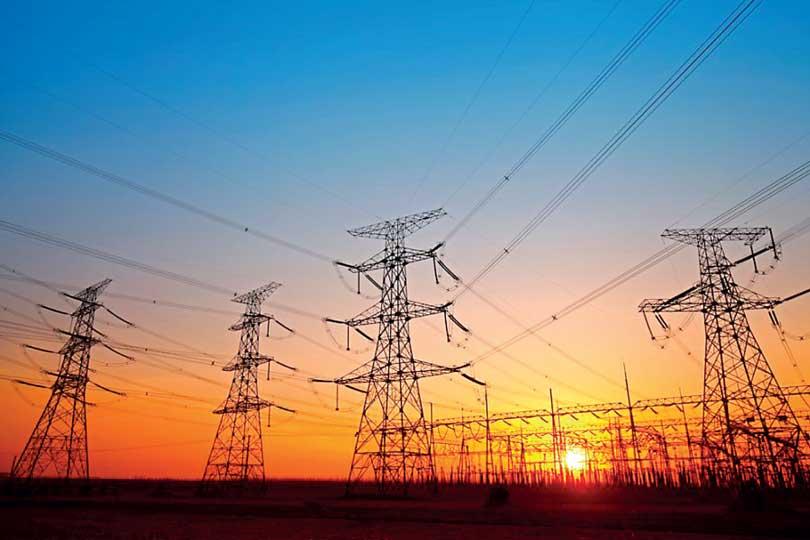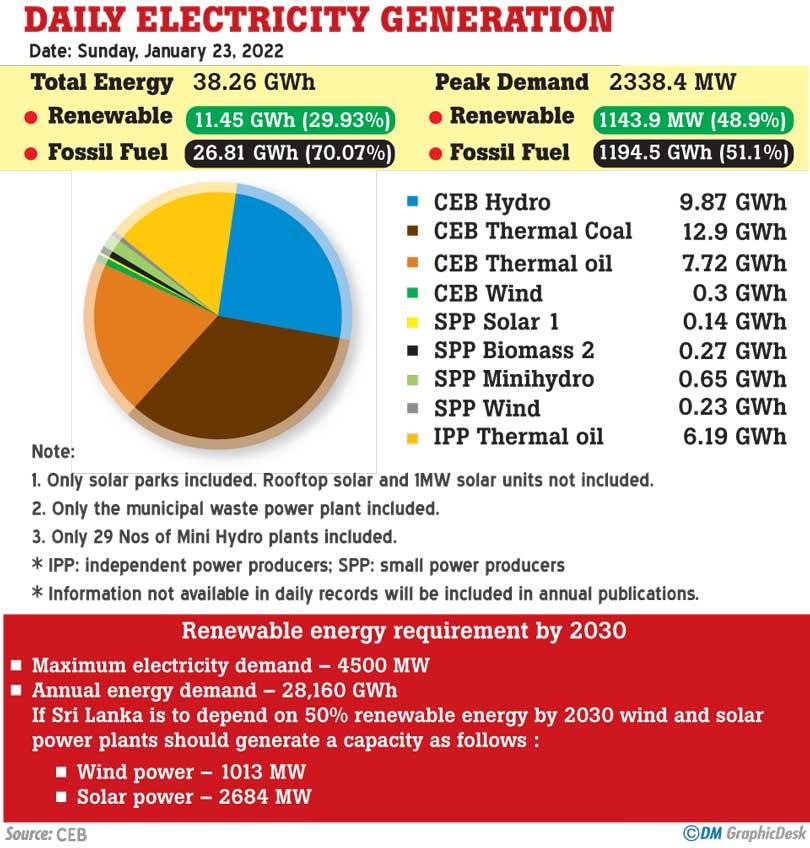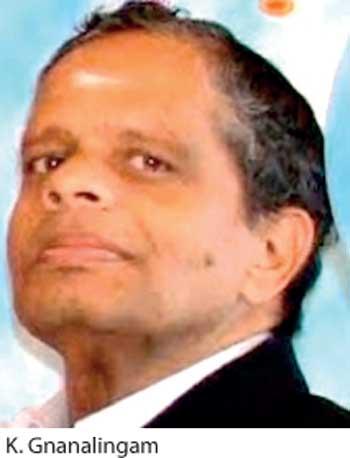Reply To:
Name - Reply Comment

 The prevailing electricity crisis has put Sri Lankans in a dilemma. A few weeks back the Sri Lankan public had second thoughts about purchasing gas cylinders and now the citizenry is getting ready to face a series of power outages with the prevailing fuel and forex crisis. Why the authorities didn’t get ready for this crisis amidst many warnings from engineers and experts is shrouded in doubt. However, the Ceylon Electricity Board (CEB), Ceylon Petroleum Corporation (CPC) and the Ministries of Power and Energy seem to be at loggerheads; further aggravating the crisis at hand. The Minister of Power sought assistance from the treasury to obtain a USD 500 million credit line to purchase oil from Indian Oil Company. But the treasury is yet to respond regarding the matter. Even though the respective ministers have ascertained that fuel purchases have been done to survive for a few more days, for how long such purchases could be done amidst the prevailing forex crisis too remains a question.
The prevailing electricity crisis has put Sri Lankans in a dilemma. A few weeks back the Sri Lankan public had second thoughts about purchasing gas cylinders and now the citizenry is getting ready to face a series of power outages with the prevailing fuel and forex crisis. Why the authorities didn’t get ready for this crisis amidst many warnings from engineers and experts is shrouded in doubt. However, the Ceylon Electricity Board (CEB), Ceylon Petroleum Corporation (CPC) and the Ministries of Power and Energy seem to be at loggerheads; further aggravating the crisis at hand. The Minister of Power sought assistance from the treasury to obtain a USD 500 million credit line to purchase oil from Indian Oil Company. But the treasury is yet to respond regarding the matter. Even though the respective ministers have ascertained that fuel purchases have been done to survive for a few more days, for how long such purchases could be done amidst the prevailing forex crisis too remains a question.
Power cuts back?
Even though the Norochcholai Power Plant’s Unit 3 was supposed to be back in operation from last Sunday (January 22) CEB officials claim that it would resume operations only on January 28. Therefore there’s a 100 Megawatt (MW) capacity shortage. The Sapugaskanda Oil refinery has ceased operations due to lack of furnace oil. The barge-mounted power plant which provided a 60 MW capacity to the National Grid ceased operations from Monday (January 24). In addition, the Kelani Tissa Power Plant can operate for another four days. Hydropower generation too has been challenged due to limited rainfall.
“The Yugadanavi plant has furnace oil stocks that would last for around nine more days,” opined Eranga Kudahewa, CEB’s Executive Committee Member. “A ship carrying furnace oil was supposed to arrive on February 3, but as per the information we have this ship will not arrive as the country has no dollars to do the financial transaction.”
In this backdrop the CEB engineers say that power cuts will be imposed from today (January 25) for a duration of two hours between 1.00pm and 9.00pm. “However we still need to obtain approval from the Public Utilities Commission,” said Kudahewa.
Last week, CPC officials claimed that the CEB had requested for furnace oil stocks from February onwards. When asked about this claim Kudahewa said that since October 21, the CEB has given them a weekly report on the fuel requirement. “Therefore they cannot make such claims,” he added. Kudahewa further said that the PUCSL is yet to provide approval and that there would be a delay in aforementioned times. “Once the PUCSL gives approval we have to arrange the schedules. But we can assure that there would be power outages to meet supply and demand,” he said.
Heading towards a major crisis

There’s no wind these days to generate electricity from wind power. If you take solar power there are no storage facilities. There’s no crisis management team appointed to manage the situation at hand. Engineers have predicted that Sri Lanka won’t get sufficient rainfall
till May
-Saumya Kumarawadu CEB Engineers Union President
Shedding light on the prevailing situation CEB Engineers Union President Saumya Kumarawadu said that the amount of furnace oil at Sapugaskanda oil refinery was sufficient till January 22. “Furnace oil capacity at Kelani Tissa is even less. Water levels in reservoirs are declining due to the dry season and when water levels reduce restrictions are imposed by the Water Management Committee comprising officials representing CEB, Irrigation Department, Water Board etc. The Randenigala reservoir has already been restricted and Kotmale too has been restricted since last week. Reservoirs such as Victoria get restricted automatically. There’s no wind these days to generate electricity from wind power. If you take solar power there are no storage facilities. There’s no crisis management team appointed to manage the situation at hand. Engineers have predicted that Sri Lanka won’t get sufficient rainfall till May. Even if fuel is being supplied we are heading for a major electricity crisis by March.” said Kumarawadu.

There will be a drought in time to come and how will we produce hydropower when water levels in reservoirs go down? What needs to be done is to store water during the rainy season and generate electricity from these plants. During the drought, the thermal plants can operate
-Ranjan Jayalal CEB Trade Union Leader
No alternative plan
“The CEB is facing a crisis and there’s no alternative plan to generate electricity during an emergency,” opined CEB Trade Union Leader Ranjan Jayalal. “The Norochcholai power plant has undergone a series of breakdowns since its inception in 2011. When such a breakdown takes place the engineers have to wait for around 20 days for it to cool off. There will be a drought in time to come and how will we produce hydropower when water levels in reservoirs go down? What needs to be done is to store water during the rainy season and generate electricity from these plants. During the drought, the thermal plants can operate,” he suggested.
Jayalal further said that the plan to construct the Sampur Power Plant in 2016 didn’t succeed. “Another alternative is to install solar panels on rooftops especially in houses located in the dry zone. These people could be given a loan. So far we don’t have the technology to store solar power at night. What could be done is to use solar power during day time and use hydropower at night. Such plans should be in place if Sri Lanka is aiming to become an energy self sufficient nation by 2030. After 1977 the demand for electricity increased by manifold mainly after the free trade zones emerged. While there was ample opportunities to move for alternatives we opted to neglect them.
“If we don’t go for alternatives now the industries will run out of electricity and they will have to cease operations. Fuel is not only used for electricity, but it has to be given for transport and other sectors.
“The Government can continue its tenure only if this electricity crisis is solved. Back then Minister Ravi Karunanayake had a plan to obtain fuel from barge ships located in Galle, Hambantota, Colombo and Trincomalee harbours. But these ships do financial transactions in dollars,” he said.
Countries such as India refine oil on a large scale. Now that the Trincomalee oil tanks farm was written to them, the Government may seek assistance from India to provide fuel to the Sapugaskanda and Kelani Tissa power plants. In that case India will provide us with electricity at a higher price and we will have to distribute it at a lower rate, incurring further losses.
Term contracts, agreements for fuel need to be renewed
“The agreements to obtain diesel and petrol expire from this month,” said United Trade Union Force media spokesperson Ananda Palitha. “The Sapugaskanda refinery has closed down and a 300 MW supply from Norochcholai has been disrupted .Around 20% of power is generated from hydropower and we get around 1500 MW from wind power. We need around 2800-3000 MW of electricity daily but only around 1300 MW is being generated so far. However the term contracts have ceased. A ship carrying 40,000 MTs of diesel arrived on January 8, but it has been anchored until January 14. Another ship arrived on the January 9 and that too has been at sea. We cannot purchase oil without dollars. These ships bring fuel according to a tender procedure and if the borrowing country delays the transaction a damage is being levied.” said Palitha.
He further said that oil is being bought with spot tenders and the premium alone for one barrel costs around USD 4 million. “But now there’s no term contract for diesel. The Minister of Energy is requesting the CEB to pay in dollars. The CEB cannot import fuel separately and the CPC is bound to provide oil when CEB requires,” he added.
Palitha also said that there’s no proper pricing formula introduced by CPC. “If one liter of oil is Rs. 100 and the Government asks CPC to give it at Rs. 90 then the government should provide a subsidy. We need 1000 MTs of fuel daily and around 1700 MTs of autodiesel. Another 300 MTs is used by power plants. We produce around 1000 MTs of kerosene and around 500 MTs of aviation fuel. These were sources of getting more dollars, but all these have stopped.” he added.
Palitha further said that the CEB has to get around Rs. 43 billion from unpaid bills during the COVID period. “If there’s no forex to obtain fuel the finance ministry and treasury has to intervene,” he affirmed.

Can Sri Lanka fully depend on renewable energy?
Even though the world is moving towards renewable energy, energy experts opine that Sri Lanka still has no proper plan in place. Speaking to the Daily Mirror, Senior Energy Consultant K. Gnanalingam spoke about alternative technologies that could be used in place of coal power and whether Sri Lanka could fully depend on renewable energy.
Excerpts of the interview with Gnanalingam:
 QCoal power plants are becoming less popular around the world and it is said that the technology used at Norochcholai is outdated as well. What are the alternative technologies we could opt for, if we are continuing to use coal power?
QCoal power plants are becoming less popular around the world and it is said that the technology used at Norochcholai is outdated as well. What are the alternative technologies we could opt for, if we are continuing to use coal power?
Now that we have already got this plant which normally has a life of about 30 years, and we got the plant at a very high cost there is no alternative, but to use the Coal plant as far as possible. It is unfortunate that the cost at which now Coal is imported is almost 3 to 5 times the price when the plant got commissioned. The acute shortage of USD to purchase costly coal now makes power generation from this plant too costly. As of now, this plant takes almost 30 to 40% of the total generation requirements till we can find alternate means of generation. Till these alternate means of generation are found we are forced to use this very costly plant. Less polluting generation like Wind, Solar and Biomass could add the required alternate methods of generation. Sri Lanka is well blessed with these sources of generation and early steps need to be taken to develop them. It cannot be done overnight. It takes time and for this distributed generation we need to upgrade the transmission and distribution system. The Government policy is to go for 70% generation by Renewables by 2030 and go fully carbon neutral by 2050. .
The rate with which these alternate ways of the generation are being developed is too slow. We should take effective ways of increasing these alternate ways of green generation in a warlike way to reach the target fixed by the Government. This is not happening now
QIs Sri Lanka in a position to shift to renewable energy at this point or should it be done as a hybrid model?
As the development of variable renewable energy take time, we have to opt for the hybrid model. A least cost long-term generation plan must be prepared, taking into account the latest costs of each generation. The costs of this generation predictions using those accurate values is important. As we are already committed to going for NG generation, that will help to go for more variable renewable generation from Wind and Solar. With the available Hydro generation we can manage to take the total load of the system. More use of more variable renewables will require some sort of storage in the system. One can promote behind the metre storage by giving a well designed tariff that will encourage the use of batteries, costs of which are fast moving down. Bringing forward the Pumped storage plants will help in providing the grid storage. To use these naturally available green generation a great effort is required.
QWhat are the ground requirements that need to be in place if we are to establish renewable energy plants?
Wind power development takes place in coastal areas where one gets less vegetation, for example in areas such as Mannar and Pooneryn. When the costs come down we can go for offshore wind power, which does not require land space. In the case of solar, all the rooftops which has shade free area could be used . As land space used for solar could be costly, we can go for Agrivolt projects, where under the Solar modules we can effectively do agriculture. Due to the cooling effect of the vegetation -under the solar modules- there could be an additional generation of power up to 15%. This also reduces the requirement for water for agriculture.
We can also go for Floating Solar PV projects where we have solar modules floating in almost all the water bodies in the country. By covering 30 to 40% of the surface area we can get more than 34.8 GW, which will give us an annual energy output of 55,000 GWh. The energy demand of the country in 2020, according to CEB Generation Plan, is 18,542 GWh. 55,000 GWh exceeds the national energy demand for 2044, 54,963 GWh. Due to the Covid situation, we may not reach this now planned generation.
QCould you explain the cost of using coal power and a comparison of rates if we shift to renewable energy?
Cost of Coal power taking only the fuel cost will now be MORE than Rs 30/kWh and selling at Rs 16.75/kWh will be a great loss. The costs due to the externalities were worked as more than Rs 10/kWh. This will include the environmental pollution of Coal power generation. In addition, the country loses revenue from not charging the Import duty on the Coal imported. Compared to this, Wind power at Mannar 100MW costs around Rs 9/kWh and the latest offer for ground-mounted solar projects was about Rs 10/kWh. As the wind does not blow all the time and solar generation is only during the daytime we need additional storage and all the available Hydro to meet the night peak. By suitably designing a Tariff the charges during the night peak could be high and therefore we can encourage behind-the-metre storage.
QThe country is once again experiencing power outages due to lack of fuel and the CPC is demanding the power plant to pay off debts. What does the future of Sri Lanka’s power generation look like with the existing forex crisis?
Looks very critical. It is only if accelerated low-cost renewables are constructed together with the required storage as batteries and pumped storage, that we can avoid power cuts in the future.
Matters under control?
Speaking to the media, Power Minister Gamini Lokuge said that the authorities are trying their best to provide an uninterrupted power supply. “The President instructed us to speak to the Central Bank, get the necessary finances and purchase fuel.” Lokuge said.
In this backdrop the CEB engineers say that power cuts will be imposed from today (January 25) for a duration of two hours between 1.00pm and 9.00pm. However we still need to obtain approval from the Public Utilities Commission
-Eranga Kudahewa CEB Executive Committee Member
Following a discussion with the stakeholders, President Rajapaksa has issued a directive to the CPC to provide unlimited supply of diesel and furnace oil to continue the power supply without interruptions. “But still the oil is not flowing through the pipelines,” opined CEB’s Additional General Manager Andrew Nawamani at the time this paper went to print. “The finance Ministry too has agreed to release funds to make necessary payments, but those are minor issues. What is important now is to get the required stocks of fuel to continue an uninterrupted power supply.”
When contacted, CPC Chairman Sumith Wijesinghe said that following the discussion held yesterday, the Finance Ministry has agreed to release funds to purchase fuel. “Until we get imported stocks the CPC will provide 2000 MTs of diesel to the CEB,” he added.

Around 20% of power is generated from hydropower and we get around 1500 MW from wind power. We need around 2800-3000 MW of electricity daily but only around 1300 MW is being generated so far
-Ananda Palitha United Trade Union Force media spokesperson